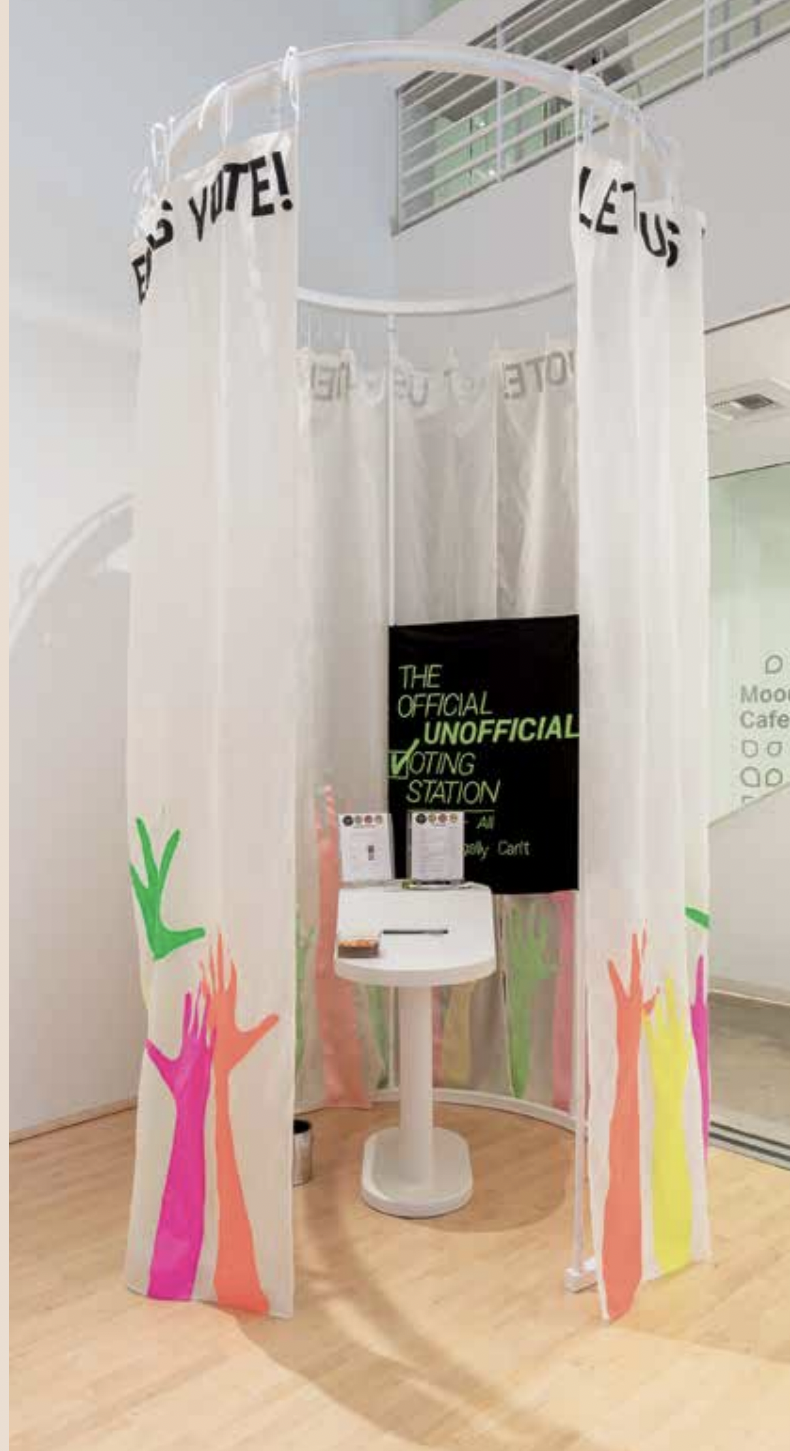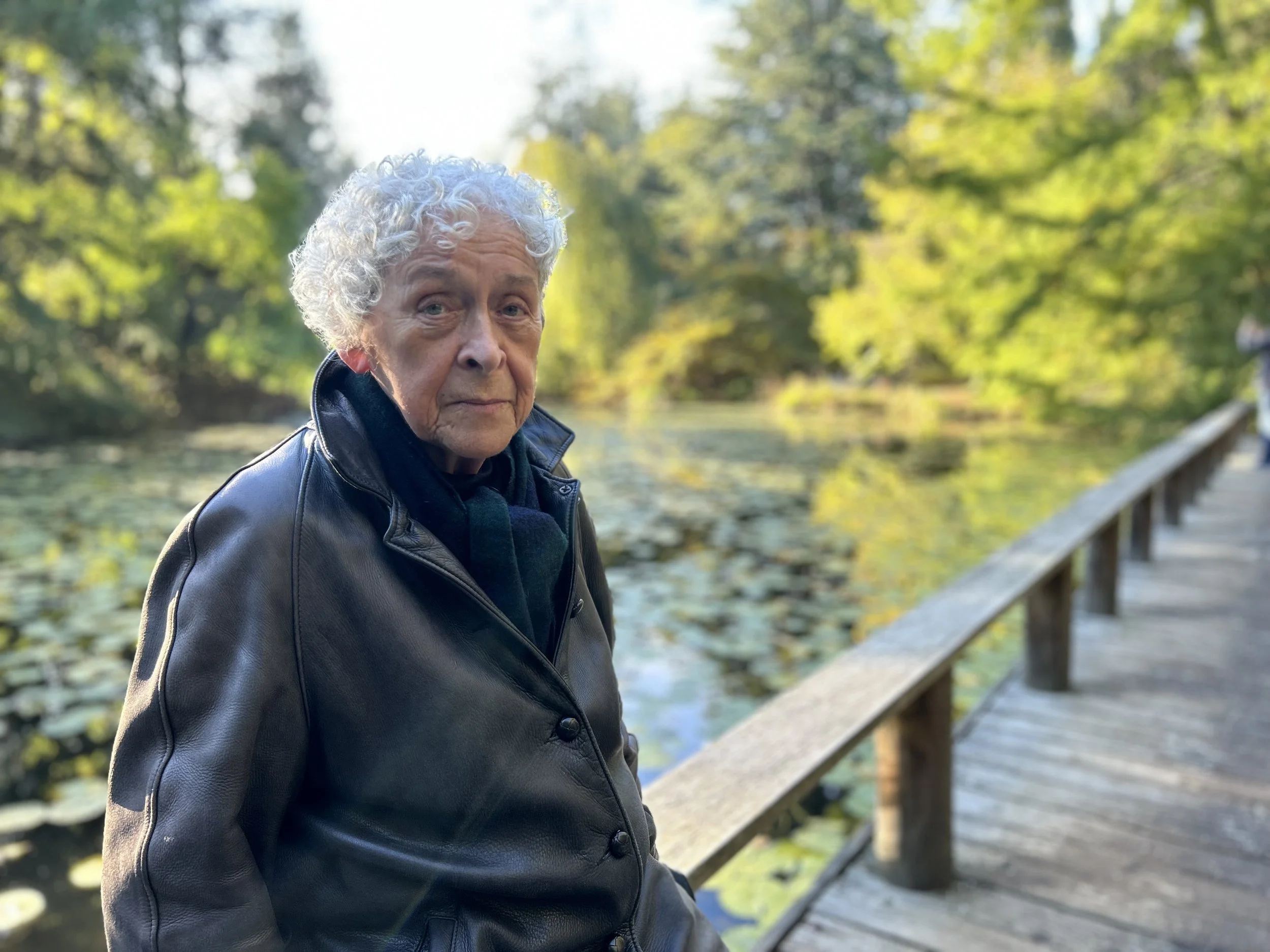In The Creative Instigator's Handbook, Leanne Prain looks at public art for social change
Author talks to those who have “mastered the art of positive troublemaking”—and shows how easy it is for others to do the same
EVERY PIECE OF public art has a story behind it, from the Little Free Library Project bookshelves scattered around local neighbourhoods, to the bright pink-and-yellow coloured alleyway titled Alley-Oop in downtown Vancouver that’s been the subject of thousands of social media posts. In her new guide The Creative Instigator’s Handbook (Arsenal Pulp Press), bestselling author Leanne Prain teaches readers how to tackle creative projects that inspire social change—and that doing so doesn’t have to be as hard as it sounds.
With one step in each of its 10 chapters—including forming an idea, collaborating with others, executing the project, and promoting it—Prain’s newly published book motivates readers to make a public art piece that engages the people who see and interact with it. Prain interviews 23 creative instigators that have made widely known projects, and delves into the processes and inspiration behind their public works.
One of the artists interviewed is Colette Miller, creator of the Global Angel Wings Project. The large, colourful sets of angel wings Miller paints onto buildings (first in Los Angeles in 2012, and now worldwide) represent the heavenly aspects of humanity, and draw crowds upon crowds of people to pose with them for photos.
Other creative instigators featured include Aram Han Sifuentes, the designer of the “Protest Banner Lending Library” and the “Official Unofficial Voting Station”, a re-created polling booth for Americans without the right to vote; and Luke Jerram, the mastermind behind the “mile-long Slip ‘N Slide”, “Play Me, I’m Yours” public street pianos, and “Museum of the Moon”, a giant moon installation that travels country to country, being set up in pools, cathedrals and more.
Whether you’re a professional painter with a Master of Fine Arts degree, or simply someone who spent a bit of their spare time learning to embroider during quarantine, says Prain, The Creative Instigator’s Handbook is designed to be as accessible as possible to any reader who wishes to take on an art piece. Prain writes that a creative instigator is someone who has “mastered the art of positive troublemaking,” which she says means breaking the more traditional bounds of creative practice by crafting new projects with old mediums.
According to Prain, who also co-authored the widely popular crochet and knit graffiti book Yarn Bombing alongside Mandy Moore, The Creative Instigator’s Handbook is intended to serve as a pep talk meant to catalyze people’s creative endeavours.
Leanne Prain. Photo by Jackie Dives
“Often, you know, you need somebody to sort of be the ringleader to start things in life,” says Prain. “So if you say, ‘Oh, I want to make this big change project,’ or ‘I want to paint a mural’—if you sit around waiting for somebody to ask you, it’s not likely to happen. At a certain point, you have to be like, ‘I’m going to be the person to create a mural, and I’m going to invite my friends to do this, and I’m going to have a vision for this.’”
Prain grew up in the artist-dense region of Vancouver Island’s Comox Valley in the ‘90s, later moving to Vancouver at age 17 to pursue an education in creative writing and art history at UBC. She comes from a family of creatives: her father built boats, her sister was a professional ballet dancer, and her mom was a Jill of all trades. Prain says that spending her youth in the valley surrounded by artists, and eventually working for a community arts council herself, played a big part in her creative pursuits today.
Much in the way that Prain draws on her creative upbringing for inspiration, The Creative Instigator’s Handbook suggests that a good way to convey a strong message with your public art is by choosing a topic that you can speak to from the lens of your own life experience, rather than a broader world issue to which you can’t offer firsthand insight.
“I think the most effective change is to be inspired about things that you have a knowing of,” says Prain. “We all have our own personal backgrounds. We all have issues that are our own personal burning issues — I think that’s where it’s probably most authentic.”
From The Creative Instigator’s Handbook, Aram Han Sifuentes’s Official Unofficial Voting Station: Voting for All Who Legally Can’t, 2020. Photo by Nash Baker, Moody Center for the Arts, Houston, Texas
From The Creative Instigator’s Handbook, Ackery’s Alley behind the historical Orpheum Theatre, part of the More Awesome Now Laneway Activations by HCMA Architecture + Design, in partnership with the City of Vancouver and the Downtown Vancouver Business Improvement Association. Photo courtesy of HCMA
But sometimes finding inspiration is easier said than done. Prain considers this in chapter two of The Creative Instigator’s Handbook by suggesting that a simple yet effective way to sustain inspiration is to “spend your first waking moments jotting down a few ideas in a notebook.”
Prain also recognizes in her writing that detaching yourself from a particular outcome can be difficult when you’re taking on a new project, but that an important part of the creative process is recognizing that it’s okay for the project to change directions, or even to fail. These are all small but compelling reminders that will give readers the bit of confidence they need to accomplish something big.
“I consider myself someone who’s worked in a whole bunch of different creative careers. This is my fourth book,” says Prain. “But sometimes I find myself waiting for permission to do things, and there’s no person at the end of the day that’s going to grant you permission. You just have to start things and do things. And that’s probably part of my creative practice is constantly reminding myself of that. And I think that’s a lot of what this book is, too.”

















